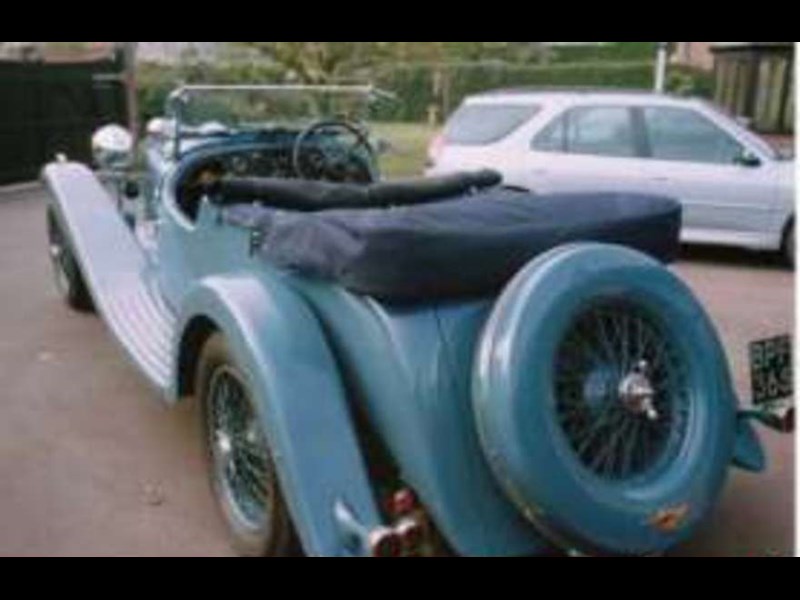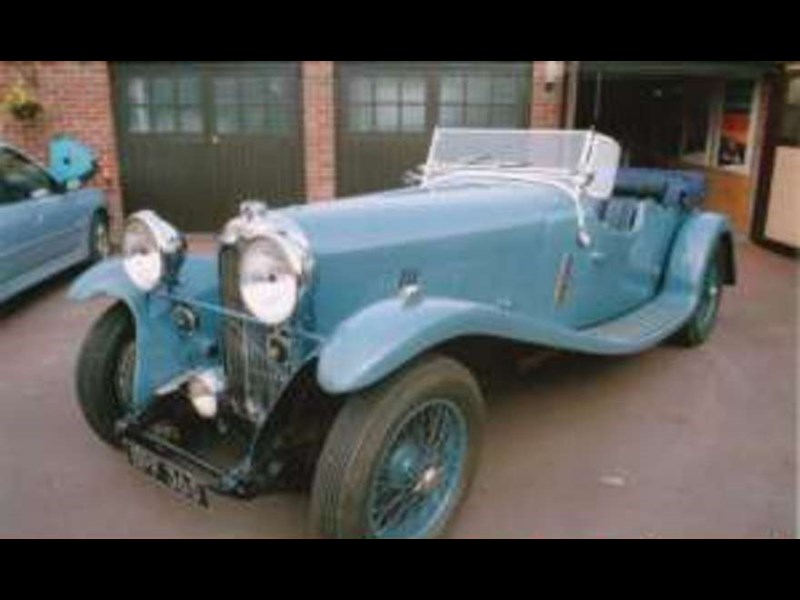1933 Lagonda M45 The big and powerful 4 -litre Lagonda M45 is rightly regarded as one of the most desirable post-vintage thoroughbred cars. It was introduced by the Staines-based company in 1933, using the famous 6-cylinder 4,453cc overhead valve engine by Henry Meadows, which itself dates back to 1928. The M45 was well received as an elegant, sporting quality car, and was endowed with considerable performance by the standards of the day. It proved an instant success, and was almost as fast in closed-body form as it was with open coachwork. Upon its introduction it was the largest-engined British sporting car available, and very few competitors could even approach the performance its big 6-cylinder engine offered. The M45 model was based on the 10ft 9ins wheelbase chassis of the preceding 3-litre ZM model, reworked to accept the 4 -litre Meadows engine and its associated Meadows T8 gearbox. The long stroke engine had bore and stroke dimensions of 88.5mm x 120.65mm to displace 4,453cc, producing around 108bhp at a lazy 3,100rpm. Launched at the 1933 Motor Show, the 4 litre Lagonda M45 was the first model from the Staines sports car company to use the straight six Meadows engine, which gave the new car near 100 mph performance, allied to remarkable stamina, a prototype being driven in the 1500 miles from Dieppe to Brindisi, beating the express train by a massive 14 hours. The M45 offered performance to match the new Bentley 3 litre, at virtually half the cost, and it quickly became the fashionable model to have, notable owners being world land and sea speed record holder Sir Malcolm Campbell, and, on the publication of The Saint in 1935, Leslie Charteris in New York, in celebration of his 25th novel. A full team of specially prepared short-wheelbase M45s were built and raced in the 1934 RAC Tourist Trophy at Ards in Ulster, finishing 4th, 5th and 8th despite the handicap system favouring smaller cars, amongst only 17 finishers from a field of 40 starters. These TT cars were then re-prepared at Fox and Nicholl, locally in Tolworth, to compete in the 1935 Le Mans 24 hour race. It was Hawkers test pilot, John Hindmarsh, and Luis Fontes, a 21-year old Anglo-Portuguese, who excelled, winning this classic endurance race outright. Exclusive, just 410 M45s were completed in the 1933-35 period, most of them carrying Lagondas own coachwork. The M45 was regarded very much within its period as a fast and rugged gentlemans sporting car, quickly finding favour amongst the wealthy sporting fraternity.

